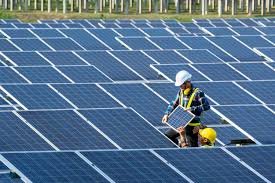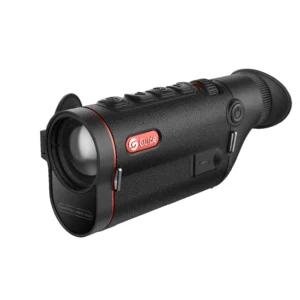Solar energy is widely regarded as a solution to reduce carbon footprints and cut energy costs, but many people wonder: Can solar power work in cold weather? It’s a common concern, especially for those living in regions with long winters, snow, and colder temperatures. In this article, we’ll dive into how solar power performs in cold climates and address some of the myths surrounding its effectiveness.
How Do Solar Panels Work?
Before we get into cold weather performance, it’s important to understand how solar panel function. Solar panels convert sunlight into electricity using photovoltaic (PV) cells. When sunlight hits the cells, electrons are set in motion, creating an electric current. The amount of power generated depends on how much sunlight reaches the panels, not the outside temperature.
Do Solar Panels Work in Cold Weather?
Yes, solar panels can absolutely work in cold weather. In fact, they may perform even better under certain conditions. Solar panels rely on sunlight, not heat, to generate electricity. Cold weather, in some cases, can even help enhance the efficiency of solar panels.
Why Solar Panels Work Better in Cold Conditions
Cold temperatures can actually improve solar panel efficiency. Here’s why:
- Higher Efficiency in Cooler Temperatures: Photovoltaic cells in solar panels are more efficient when they are cold. High temperatures can reduce their performance, meaning solar panels in colder climates might generate more power than those in extremely hot areas.
- Clear, Sunny Winter Days: Even in cold regions, clear skies during the winter can still allow sunlight to hit solar panels. If the sun is shining, your panels will generate power, regardless of the cold.
- Reflectivity of Snow: Believe it or not, snow can enhance solar panel performance. Fresh snow reflects sunlight, increasing the amount of light that hits the panels. This reflectivity can boost the amount of energy produced on clear, sunny days following a snowfall.
The Impact of Snow on Solar Panels
One major concern for homeowners in colder climates is snow. If snow covers the panels, it seems logical that they won’t be able to capture sunlight. While it’s true that snow can block the sunlight from reaching the panels, most systems are designed to handle this issue efficiently.
Self-Cleaning Nature of Solar Panels
Solar panels are typically installed at an angle, which allows snow to slide off naturally. Once the sun comes out and starts melting the snow, it usually slides off the panels, leaving them clean and ready to capture sunlight.
Minimizing Snow Accumulation
For areas with heavy snowfalls, homeowners can take additional steps to prevent snow from accumulating on their solar panels. Some strategies include:
- Panel Tilt: Adjusting the tilt of the solar panels can help reduce the amount of snow that sticks.
- Heated Panels: Some homeowners opt for specialized systems that include heating elements to melt snow off the panels.
Do Shorter Days Affect Solar Power Generation?
Winter days are shorter, and sunlight is less abundant. Does this mean that solar power becomes ineffective in winter?
Less Sunlight, But Still Productive
While it’s true that shorter days result in fewer hours of sunlight, solar panels can still generate significant energy during daylight hours. Most systems are designed to produce enough power throughout the year to meet the household’s needs. Plus, advances in battery storage allow excess energy generated during the sunnier months to be stored for use in the winter.
Myths About Solar Power in Cold Climates
Several myths persist about solar power not working in colder climates, but many of these are misconceptions. Let’s debunk some of the most common ones:
Myth 1: Solar Power Doesn’t Work in Snowy Areas
Many people assume that solar panels won’t function effectively in snowy regions. However, as mentioned earlier, solar panels can still generate electricity in snow-covered areas, and sometimes even perform better due to the reflection of sunlight from snow.
Myth 2: Solar Panels Don’t Work in Cloudy Weather
While solar panels perform best in direct sunlight, they still work on cloudy days. They generate less energy, but even on overcast days, there’s enough diffuse sunlight to create electricity.
Myth 3: Solar Energy Is Only Effective in Warm Climates
This myth stems from the idea that solar panels need heat to function, which is not true. Solar panels convert sunlight into electricity, so as long as there’s sunlight—even in cold climates—they will generate power.
Real-World Examples of Solar in Cold Regions
Solar power is already being used effectively in some of the coldest and snowiest regions of the world. Countries like Canada, Germany, and parts of Scandinavia, which experience long, harsh winters, have adopted solar power successfully.
Germany: A Leading Example
Germany, despite its cold and cloudy winters, is one of the world’s leaders in solar power adoption. The country’s renewable energy policies and technological advancements in solar storage have allowed it to thrive even in less-than-ideal conditions.
Alaska: Solar Success in Extreme Cold
In Alaska, where temperatures can drop below freezing and sunlight is limited during winter, solar power has proven to be a reliable energy source for many homes and businesses. Solar panels in these regions are optimized to capture as much sunlight as possible during the shorter daylight hours, and cold temperatures help improve efficiency.
Advantages of Solar Power in Cold Climates
Beyond the fact that solar power works in cold weather, there are additional benefits to consider.
Lower Installation Costs in Winter
Many solar companies offer discounts during the colder months when demand for installations tends to be lower. This can result in savings for homeowners who decide to install solar panels in the winter.
Energy Independence
In regions where energy costs soar during the winter months, solar power can offer a more stable and predictable energy source, reducing reliance on the grid and lowering utility bills.
Conclusion: Solar Power and Cold Weather—A Winning Combination
So, can solar power work in cold weather? Absolutely. In fact, solar panels may perform better in colder conditions than in hot ones. While snow and shorter days can pose challenges, modern solar systems are designed to overcome these obstacles. With proper planning and installation, solar power is a viable energy solution, even in the chilliest climates.
If you’re considering going solar in a cold region, don’t let the weather deter you. The advantages far outweigh the concerns, making solar a smart and sustainable choice year-round.
By dispelling common myths and exploring the benefits of solar in colder climates, it’s clear that solar power remains an excellent renewable energy option for those living in snowy and cold regions.
















